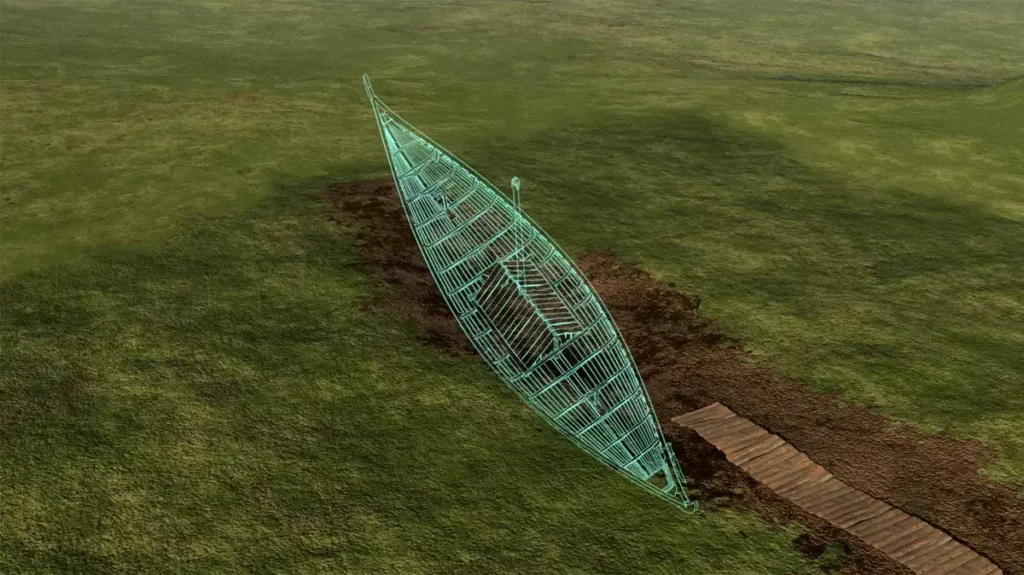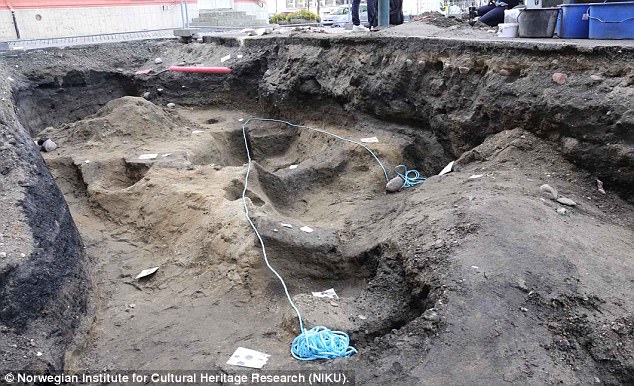An incredible 1,000-year-old Viking burial site found in Norway belonged to ‘Iron Age elite’
A hidden surprise was uncovered by archaeological excavation in Trondheim, Norway – the unmistakable traces of a boat submerged under Torvet, the market square of the city.

In the last available moments, before archaeologists decided to finish their exploration, the discovery came only in the nick of time, so that the market square could be filled in and re-paved for use as the market and meeting place of the city.
The wood had long since rotted away, and it was disturbed by posts being planted in the ground, but the form of a feature in the soil was too normal to be natural – the shape of a boat about 4 metres (13 feet) in length, oriented in a location roughly north-south. There was no real boat to be found.
Careful digging confirmed the find. The Norwegian Institute for Cultural Heritage (NIKU) archaeologists found lumps of rust and nails that indicated yes, the feature was indeed a boat.
It’s believed that Trondheim was founded by Viking king Olav Tryggvason in the year 997, but archaeological evidence suggests that people have been living there for thousands of years.

There are large gaps in Trondheim’s history, though, because of a great fire that ravaged the predominantly wooden city in 1681.
The city has been undergoing major excavation work over the past few years to try and find out some of its history. In September of last year, NIKU archaeologists uncovered an 11th century church under Peter Egges plass, where Olav Haraldsson, former Viking king and patron saint of Norway, was first enshrined as a saint.
They also found a graveyard containing hundreds of graves, and a well-preserved bronze crucifix.
The boat dig is from even earlier, probably dating back to around the 7th-10th century, if a piece of spoon and broken key found in the excavation belong to the burial.
Other items found in the boat were a small piece of sheet bronze, objects that were probably personal effects, and two long bones, also oriented north-south.
These bones are quite dilapidated, so DNA tests will need to be conducted to confirm that they are human.
The location of the burial away from the harbour and fjord dates the burial back to the late Iron Age or early Viking Age, when the Scandinavian Viking started exploring the northern hemisphere by sea.
“It is likely a boat that has been dug down into the ground and been used as a coffin for the dead. There has also probably been a burial mound over the boat and grave,” said NIKU early boat expert Knut Paasche.
He added that the boat was very similar to Åfjord boats, often seen in burials along the Trondelag coast. This, however, is the first time one has been found within the city of Trondheim.
“This type of boat is relatively flat in the bottom midship. The boat can also be flat-bottomed as it is intended to go into shallow waters on the river Nidelven,” he said.
More research will be required to confirm that the find is, indeed, a burial, but its presence further confirms the existence of a settlement older than Olaf Tryggvason’s Trondheim.